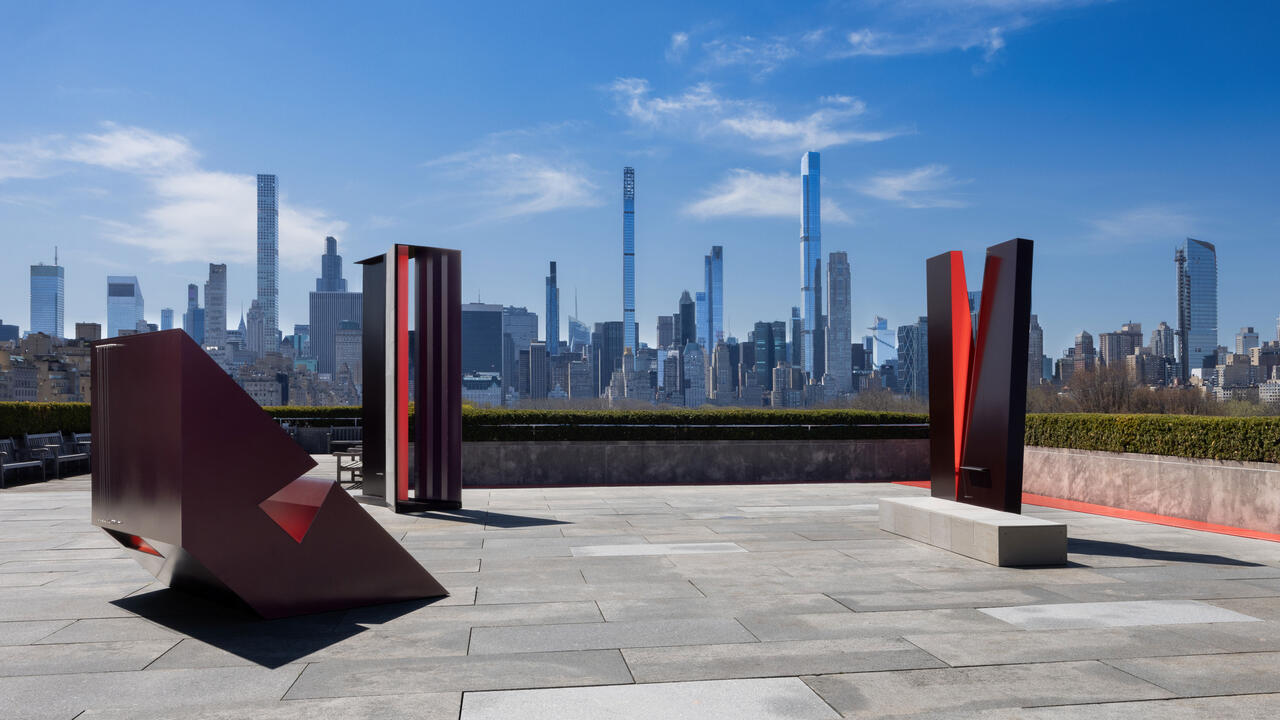With Paper, Zarina Opens a Window onto the Cosmos
The artist’s solo exhibition at the Pulitzer Arts Foundation is a serene and spiritual survey of her five-decade practice
The artist’s solo exhibition at the Pulitzer Arts Foundation is a serene and spiritual survey of her five-decade practice

The serene, meditative volumes of Tadao Ando’s Pulitzer Arts Foundation are the ideal setting for this retrospective, which explores Zarina’s refined and restrained experiments with paper and printmaking and her meditations on the comforts and vicissitudes of home. The exhibition consists of a small but thoughtful selection of works spanning five decades, placed in dialogue with key art historical artifacts that have inspired her practice and presented across three thematically distinct galleries that alternate exquisitely with a concurrent presentation of Susan Philipsz’s melancholic sound works.

Zarina’s primary medium has long been printmaking. Here, a number of prints depict some of the many cities that the peripatetic artist has called home. The triptych Delhi (2000), for instance, consists of a map of the titular city’s crisscrossing roads, an aerial view of a section of it, and an enigmatic riverine line. In Santa Cruz (1996), each of the five rectangular fields is bisected by a horizon – formed in the last panel by a line of Urdu poetry. The delicate precision of etching conveys subtly shifting qualities of light, presenting an abstracted sea view that is both atmospheric and existential.

Accompanying these are the earliest works in the show, a pair of relief prints (Untitled, 1969 and 1970) made using scraps of found wood, lightly inked so as to capture their grain and texture. For Untitled (1971), Zarina used twigs to create a dense field of vertical lines that suggest a bamboo thicket or sheets of rain, the latter echoed in the artist’s personal print of Utagawa Hiroshige’s Sudden Shower over Shin-Ōhashi Bridge and Atake (1857) displayed nearby. Delicate pin drawings from the late 1970s forego ink altogether, their countless perforations, structured by an invisible grid, drawing our attention to the physical qualities of the paper itself. All these works bear traces of Zarina’s hand – sometimes subtle, other times expressive – revealing the effects that even slight variations in pressure, texture and surface can have on a print.

The exhibition’s second gallery, dedicated to Zarina’s interest in light (especially as a metaphor for divine wisdom), is anchored by the incandescent Veil (2011), a twelve-foot-tall bamboo blind whose thinly ribbed surface is meticulously covered with squares of gold leaf. Nearby, in two works both titled Dark Night of the Soul (2010 and 2011), square sheets of paper have been dyed black with Sumi ink. One has been perforated repeatedly with a needle, while the other is encrusted with obsidian dust, transforming the black void into representations of the cosmos. These works are, somewhat surprisingly, accompanied by a pair of Rembrandt etchings of Christian stories (The Star of the Kings, c.1651, and The Entombment, 1654), dark and moody scenes illuminated by a solitary light source, their dramatic chiaroscuro presenting light and dark not as oppositional but interrelated states.

The museum’s lower-level gallery focuses on Zarina’s life-long fascination with space and structure, exemplified by her magisterial suite of 36 woodcuts, Home Is a Foreign Place (1999), each inspired by an Urdu word elicited by memories of her childhood home in Aligarh, abandoned when her family relocated to Pakistan in 1959. Words for architectural features, aspects of the environment and other fragments of the artist’s past, which are powerful affective triggers for those intimate with the language, endow the elegant abstractions that illustrate them with the weight of history and memory. An intricately carved sandstone jali, or ornamental screen, serves as excellent pivot between this work and Zarina’s cast-paper sculptures from the 1980s, which extend her abiding interest in paper into three dimensions. Experimenting with natural pigments like burnt umber, terra rossa and indigo, Zarina almost alchemically transforms cast-paper into other, more conventional, sculptural materials, each with its own distinct weight. Corner (1980), which features a single wedge-like indent, projects the heft of iron or lead. These deep reliefs, many of which evoke the courtyards and stepwells of Sultanate and Mughal architecture, as seen in the 19th-century photographs by Samuel Bourne and Raja Deen Dayal that accompany them, are also presented alongside a drawing by Kazimir Malevich – situating them, as the show does beautifully with Zarina’s entire oeuvre, between abstraction’s promise of transcendence and the immanence of daily life.
‘Zarina: Atlas of Her World’ continues at the Pulitzer Arts Foundation in St. Louis, USA, through 2 February 2020.
Main image: Zarina, Delhi, 2000, portfolio of three woodcuts printed in black on handmade Nepalese paper, mounted on Arches Cover white paper, each: 65 × 50 cm. Courtesy: © Zarina and Luhring Augustine, New York






















